When traveling through bourbon country on Father’s Day, we knew a distillery tour was a must. As the oldest continually operating distillery in the US, Buffalo Trace seemed like the perfect place to learn about the history of the bourbon craft!
Why’s it called Buffalo Trace?
Hundreds of years ago, the massive herds of American Bison (aka Buffalo) roamed far and wide across North America. Early people used these well-defined trails, coined “traces”, to traverse the extreme terrain. In fact, Daniel Boone followed a Buffalo trace to this very valley! Shortly after, brothers Hancock and Willis Lee started distilling on the banks of the Kentucky River in 1775. But the brand wouldn’t take the name Buffalo Trace until 1999.

Pet friendly grounds, human friendly buildings
Tucked away on a sprawling estate, only the water tower is visible from Highway 421. While the grounds are dog friendly, the buildings are not. So, Arlo stretched his legs in the soft Kentucky Bluegrass field adjacent to the RV lot, then took an airconditioned motorhome nap while we explored.
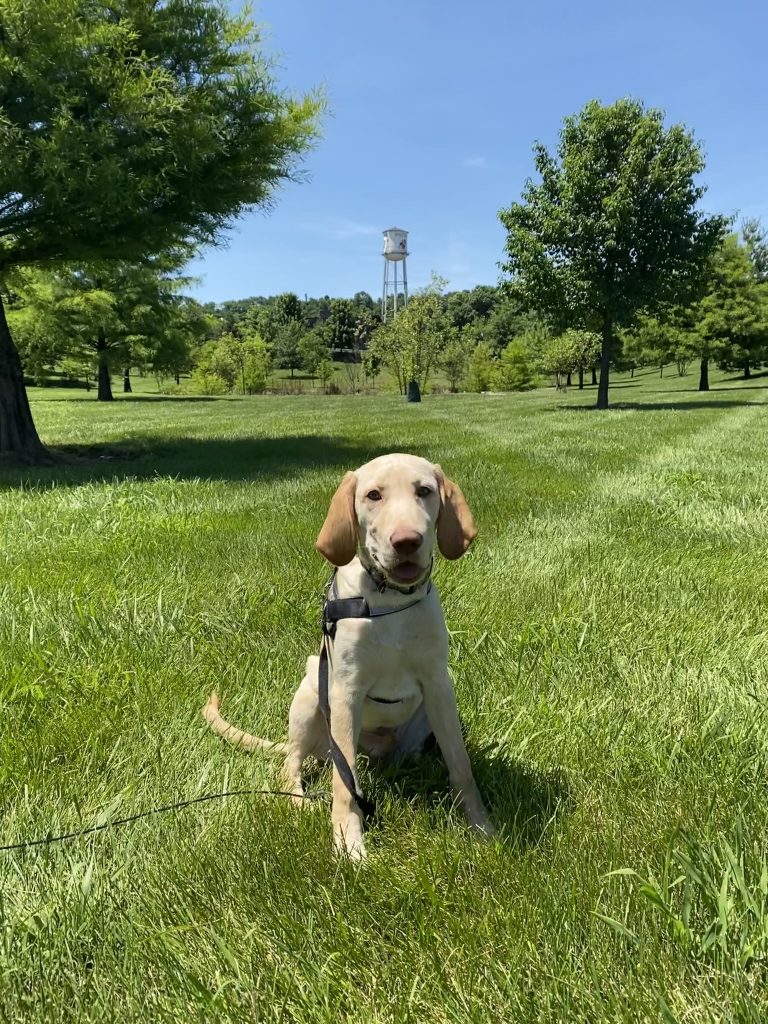
As we walked up, the super friendly parking attendant directed us to the check-in building. Though more expansive tours are available to 21+, this was a family trip. So we booked our free tour and tasting and headed to kill an hour exploring the grounds.
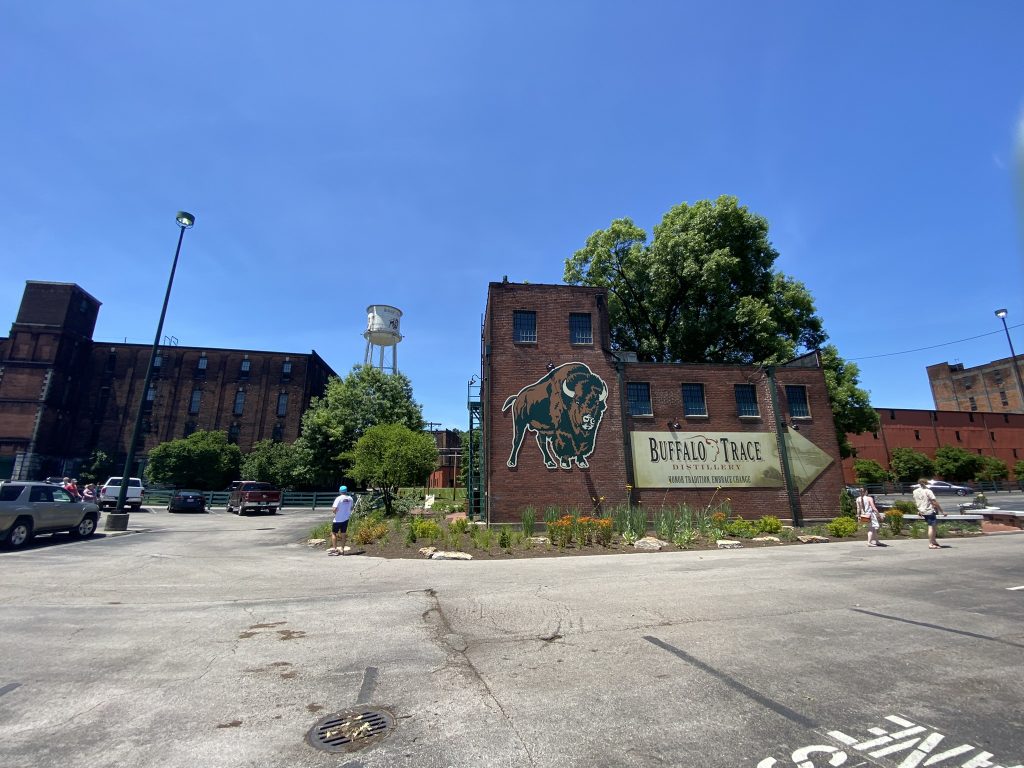
Delicious BBQ at the old Firehouse
We followed our stomachs to the Firehouse Sandwich Shop located directly below the iconic water tower. Once the home fire suppression equipment, the site now serves amazing Staxx BBQ sandwiches, beans and sweet tea. Then we wandered across the impeccably manicured property to burn off a few wiggles at the playground before meeting up with our guide.
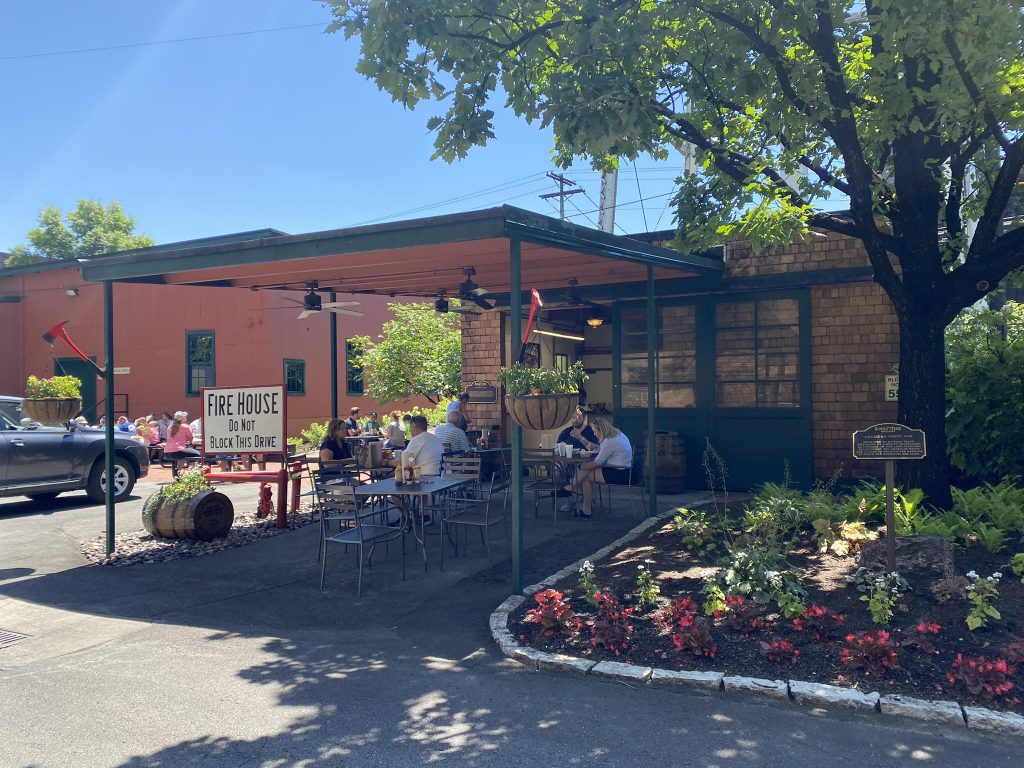
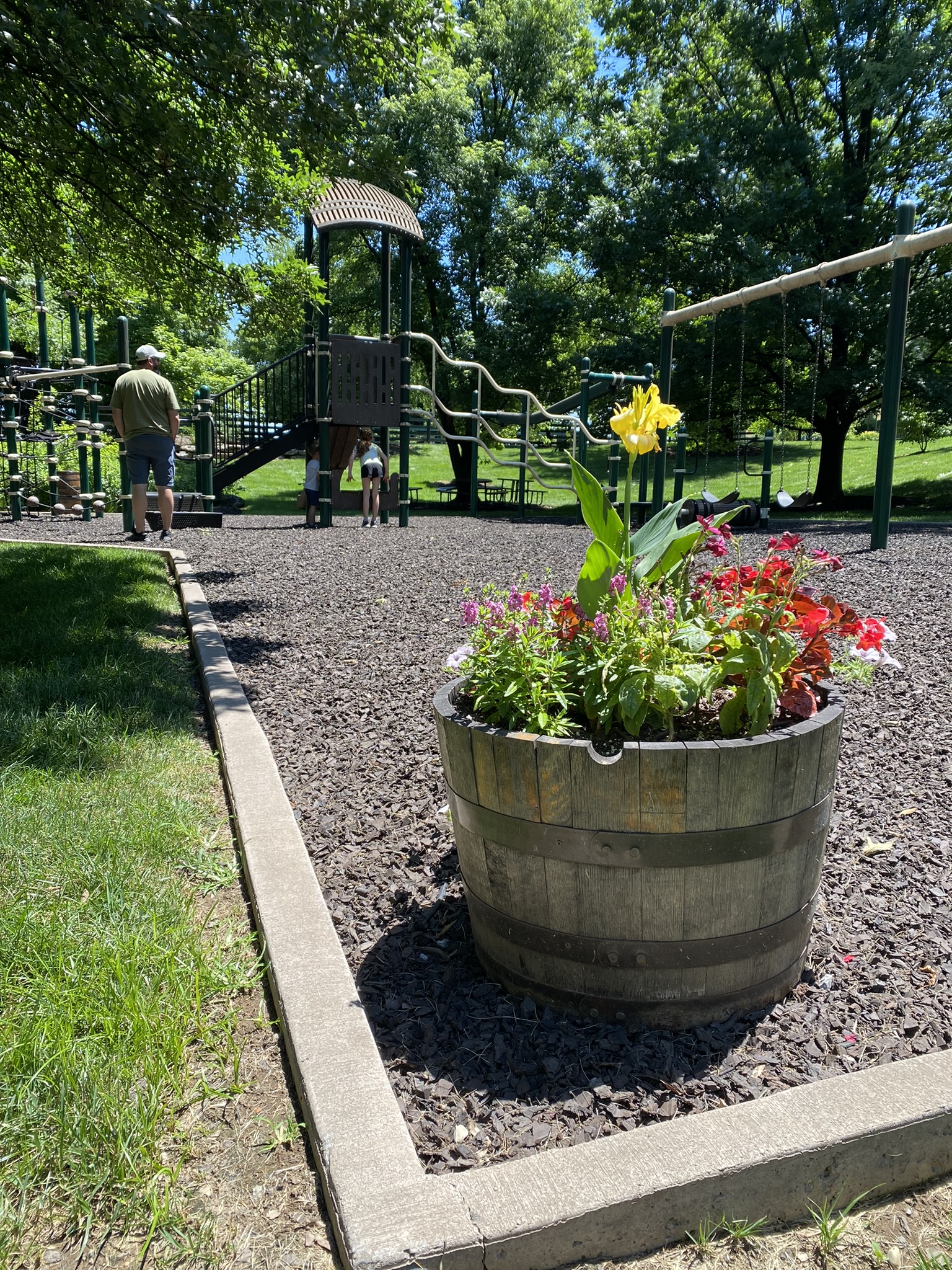
So, what predated “Buffalo Trace”?
Our tour began with a brief background of the company’s history. After acquiring the property in 1812, Harrison Blanton built the first permanent distillery along the river. When E.H. Taylor took over in 1870, he expanded and renamed the facility to O.F.C. (old fashioned copper) in a nod to his preferred distilling method. After expanding further under George T. Stagg, including Warehouse A & B which are still in use today. The current facility started to take shape after a lightning induced fire raged through the property in 1882.

How did they survive prohibition?
When the 18th Amendment to the U.S. Constitution passed in 1920, Albert Blanton had to get creative. Since most of today’s prescription medications hadn’t been created yet, tonics and herbal remedies were commonly prescribed for ailments. Known at the time as the George T. Stagg Distillery, the facility was one of four in Kentucky to receive the privilege of bottling “medicinal whiskey”. Thousands of Kentuckians fell ill between 1920-33, with doctors writing prescriptions for one pint of alcohol every ten days, often for every member of the family.

Today, Buffalo Trace keeps count of every barrel produced since the end of prohibition in 1933. The one-millionth barrel was produced in 1942 and that count grew steadily until the so-called “Bourbon Recession” in the 1980s when the drink fell out of favor. During recent decades, a revival of the spirit has pushed the company to almost 8 million barrels at the time of our visit in 2022.
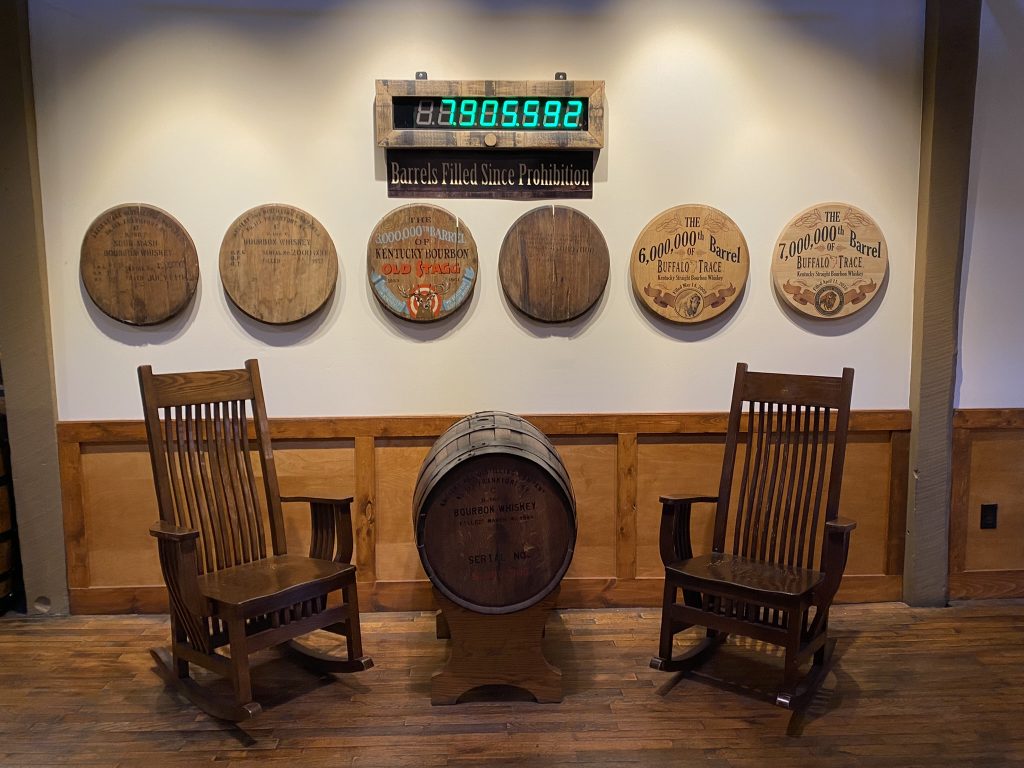
What is Bourbon?
Like many cultural mainstays, the origin story of bourbon is unclear and highly disputed. Europeans were quite good at distilling old world crops like wheat and barley into a highly concentrated clear beverage called aqua vitae, but it rarely lasted long enough to age in a barrel. The “new world” crop of corn provided a new beverage opportunity.
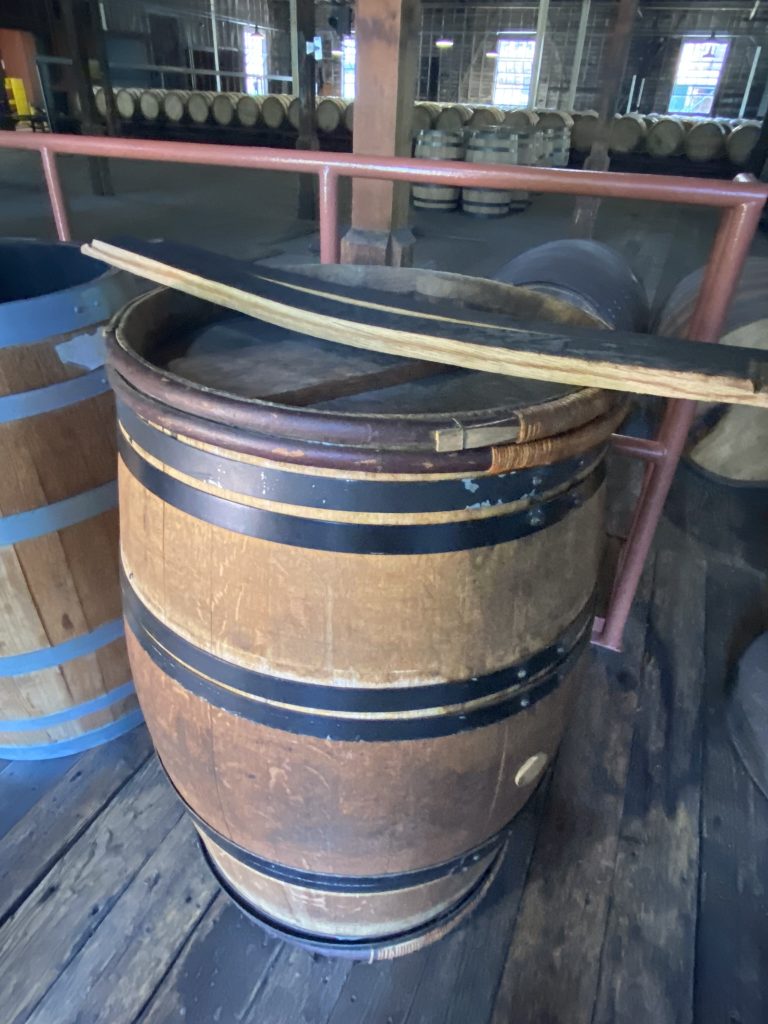
While whiskey is made from any fermented grain mash, Bourbon (declared by a 1964 law) can only be made in the US from at least 51% corn and must be aged in new charred oak barrels. That means there are A LOT of single use barrels rolling out of Kentucky, which are resold to produce complex flavors in other spirits, wines, and my favorite… dark flavorful beers.
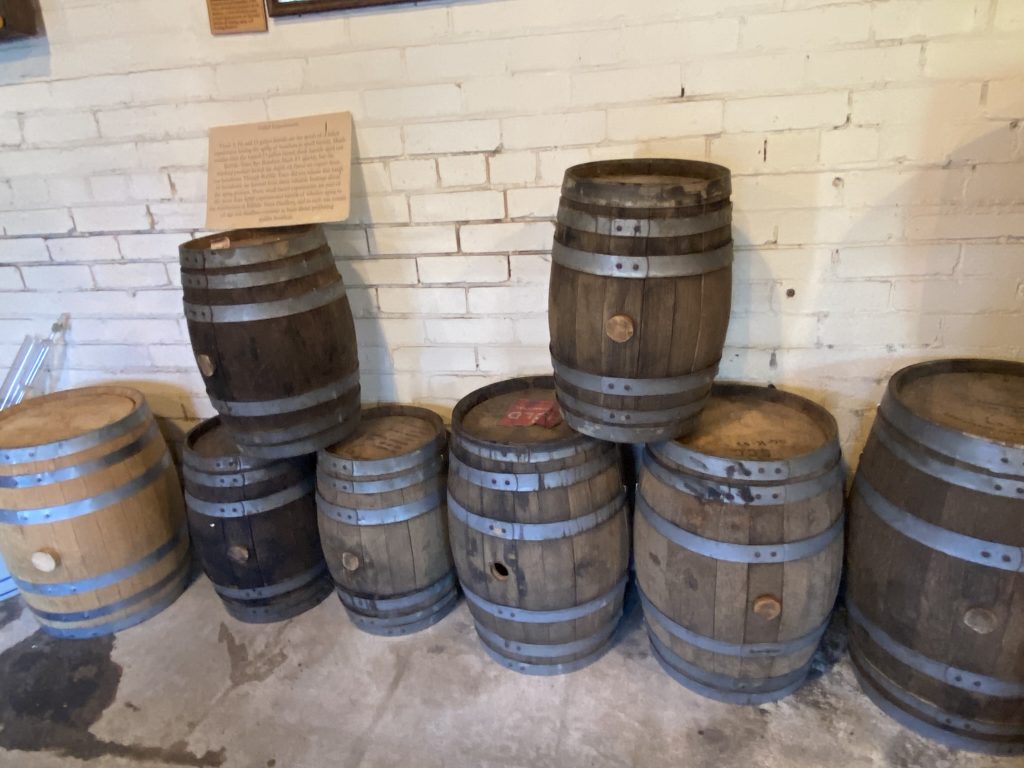
What happens inside of the barrels?
After the mash is properly cooked and strained, it’s sealed into the barrels. Initially, much of the bourbon soaks into the barrel, swelling the planks shut. Then, the water slowly evaporates creating an increasingly more concentrated flavor and alcohol content. If left for too long, the whole batch will evaporate leaving an empty barrel and huge financial loss.

Why are all the buildings black?
All four of us were perplexed by the dark coloration on the brick buildings at the facility. Was it mold? Soot? Unusual Kentucky mudbricks? A weird plant? Nope, as the alcohol evaporates from the thousands of barrels, it sticks to the surfaces of buildings turning them black. The smell of the bourbon evaporating was so strong in the warehouses, our kids now describe many things as “smelling like bourbon”.
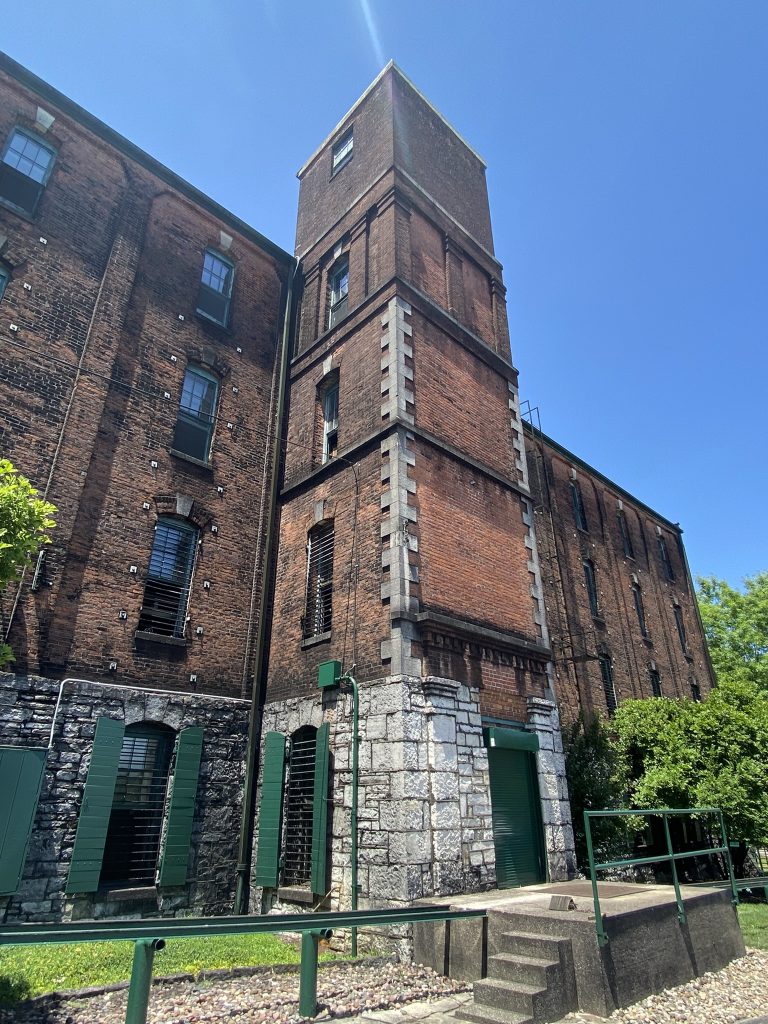
What are all the pipes overhead?
One of the first things that stood out as we wandered around were the maze of pipes between the buildings overhead. Did they carry mash? Water? Fuel? Nope. When George T. Stagg rebuilt facility after the lightning induced “Great Fire” of 1882, he installed steam heating to create first climate controlled aging warehouse in the US. The steam in concert with countless windows keeps the bourbon at a comfortable 60-70 degrees while it ages.
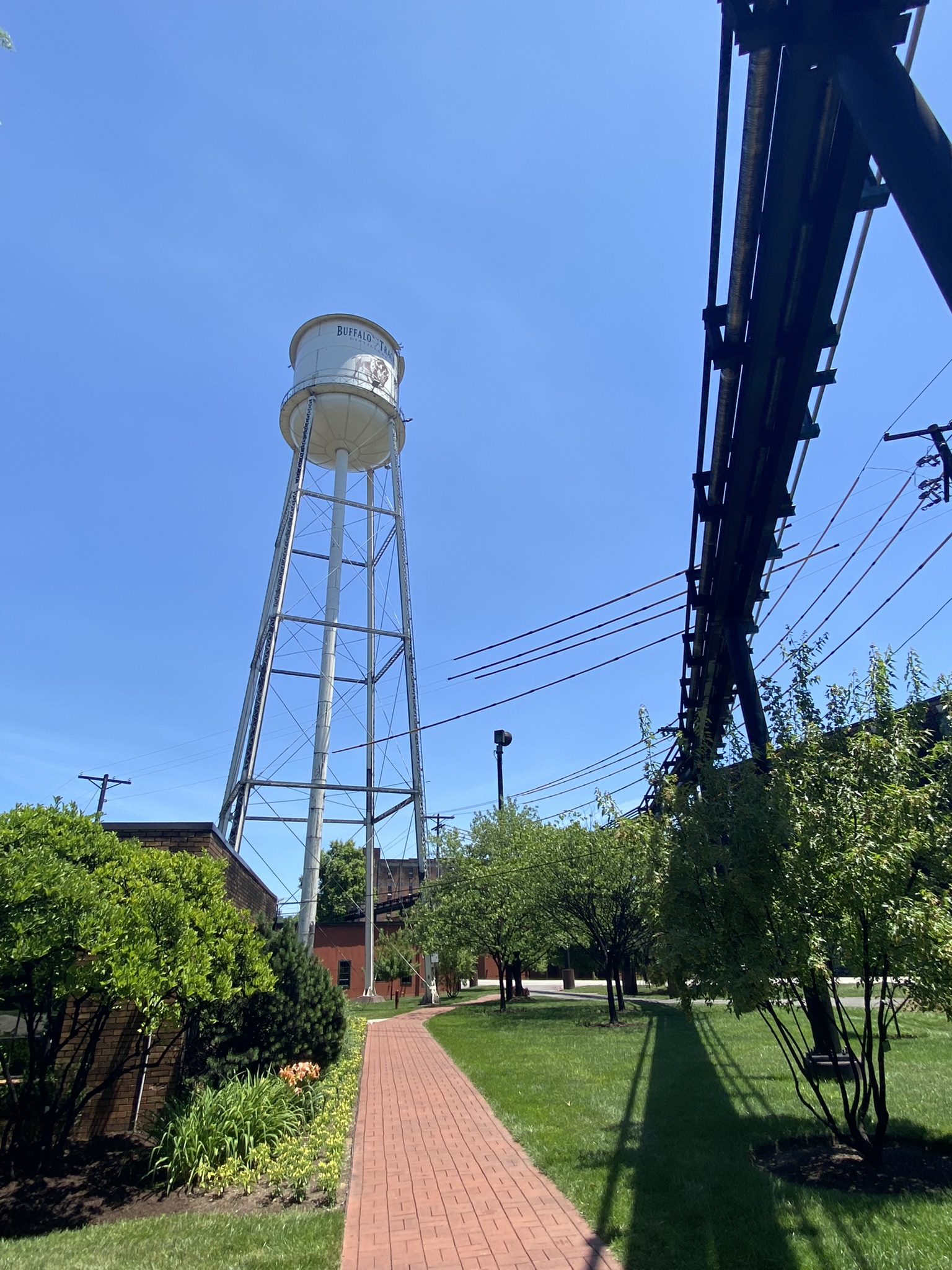

How does the bourbon find its way to market?
While here, we learned the brand actually produces several lines of bourbon, many of which are named after former leaders of the company. We were fortunate to see the Blanton’s bottling facility, where the famed “single-barrel” bourbon is bottled. When he ran the company, Blanton used to crack individual barrels for parties, so the distillery decided to pay homage with his own line.
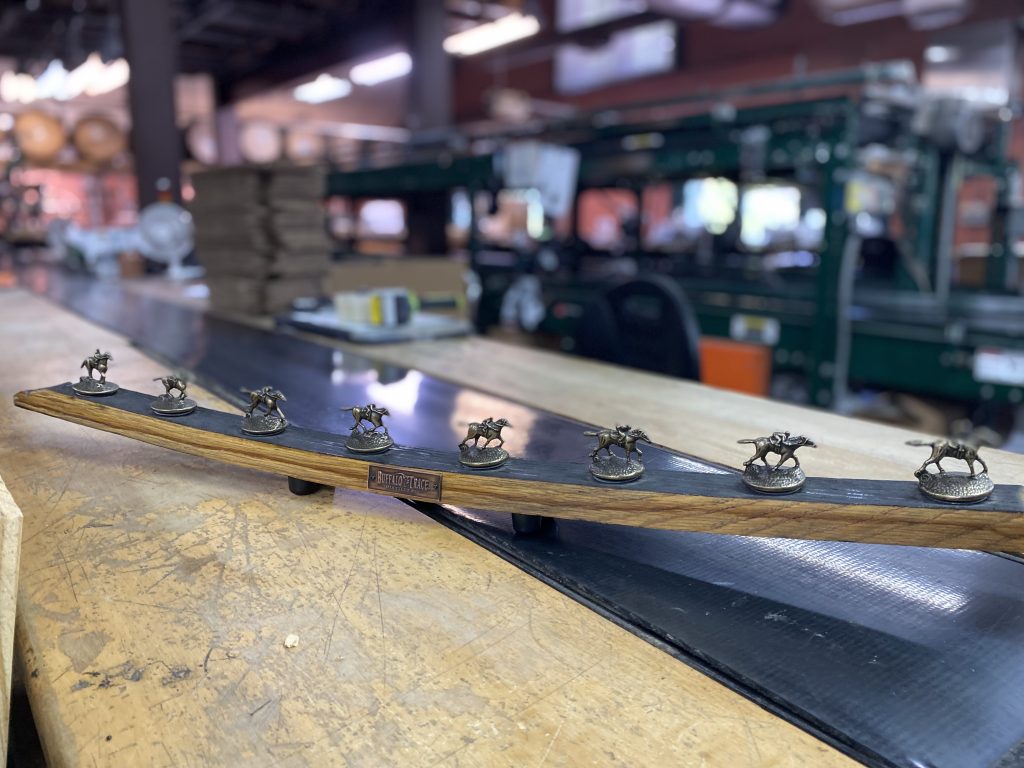
And a free tasting?
We were pleasantly surprised to end our free tour ended with a family friendly tasting above the store. Everyone enjoyed the distillery’s own root beer and bourbon balls while the adults sampled five different spirits. The kids felt like pretty hot stuff discussing the flavors in their snacks while we decided Eagle Rare was our favorite.
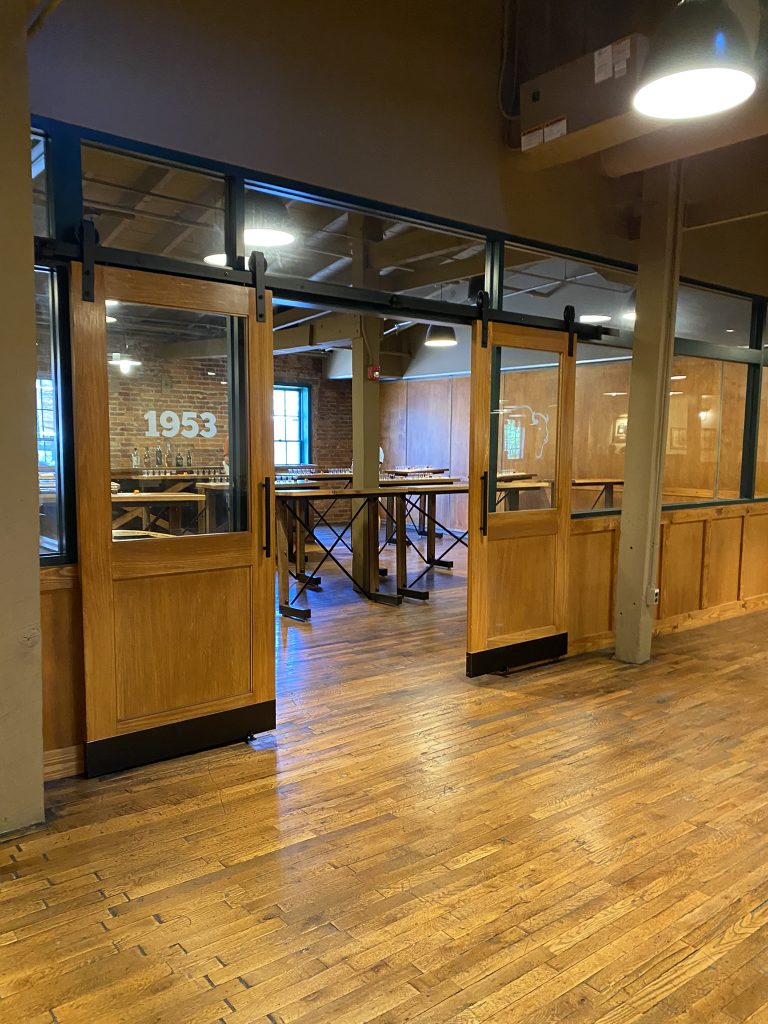
Like most tours, we ended in the gift shop, where we found a few items to take home to family and friends. The tour guide and facility were far more interesting than we could have imagined, and we can’t overstate what an interesting experience this stop was for all of us!
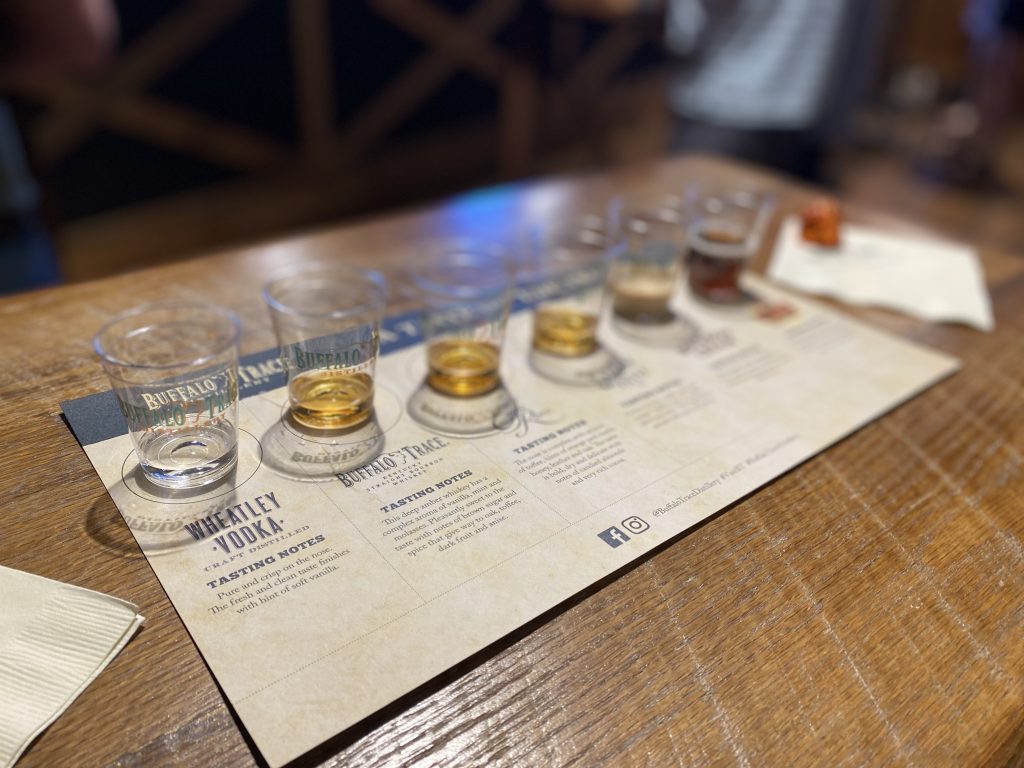
What do you think?
Have you been to Buffalo Trace? Tell us about your experience in the comments!


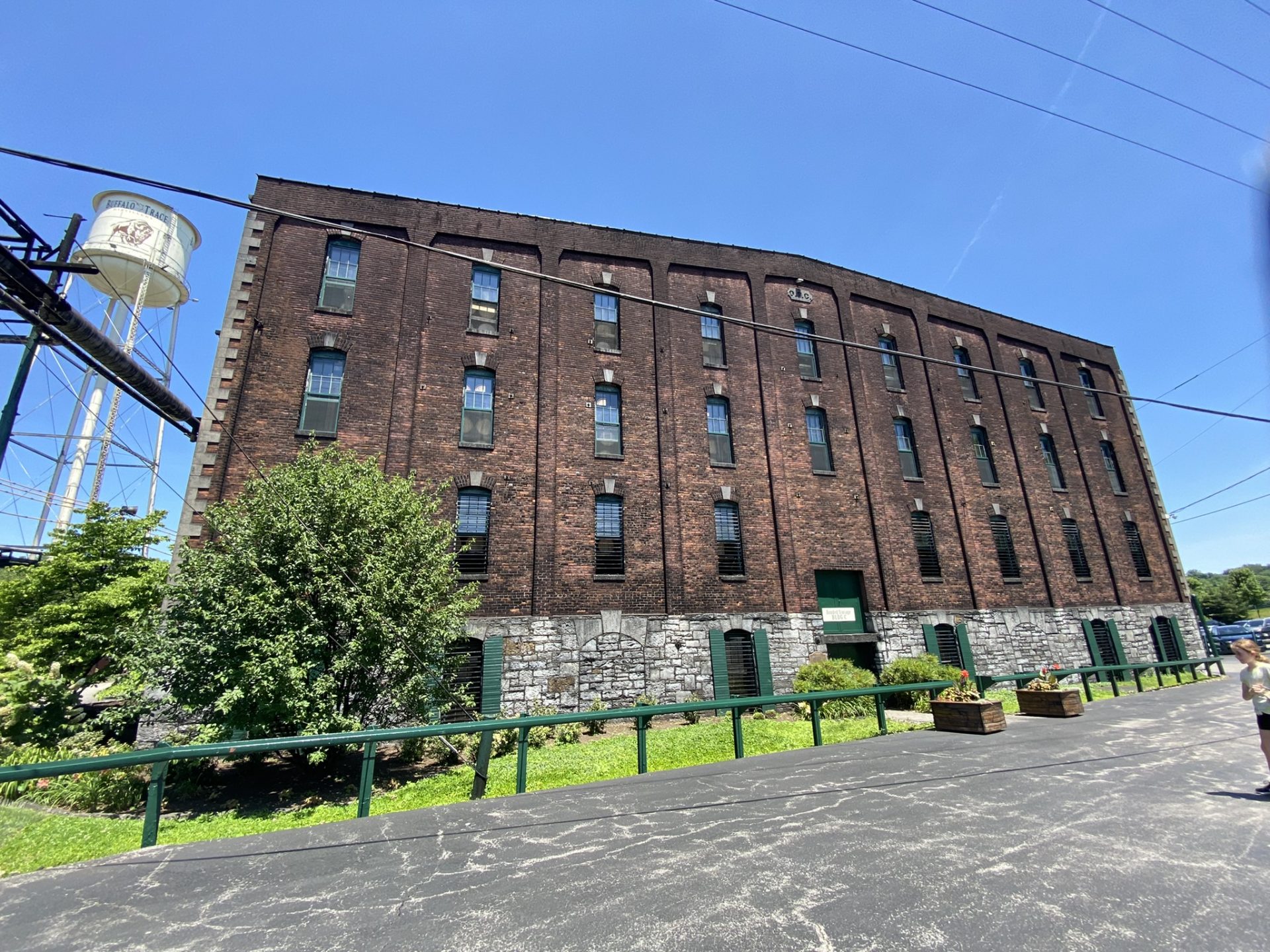



Leave a reply